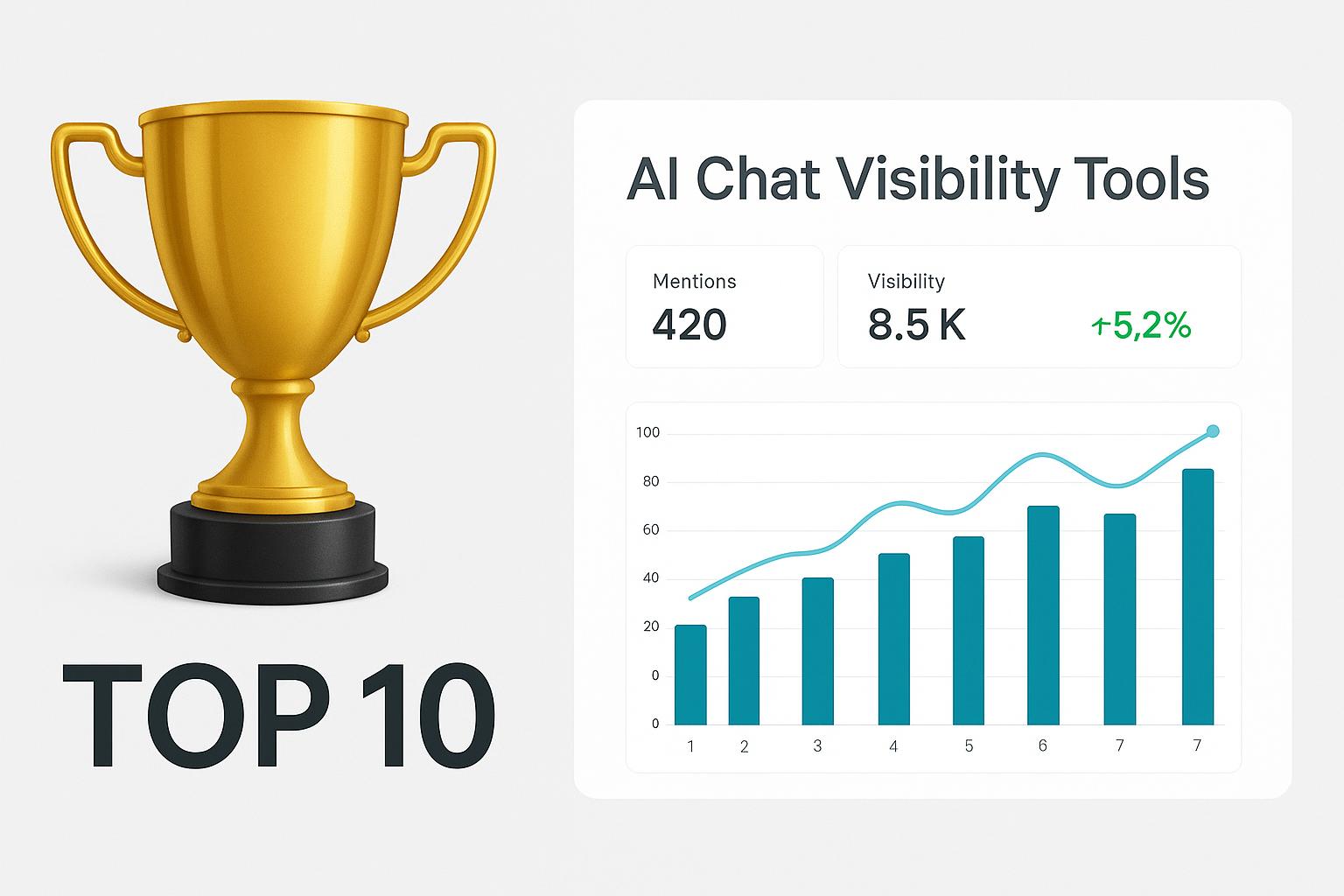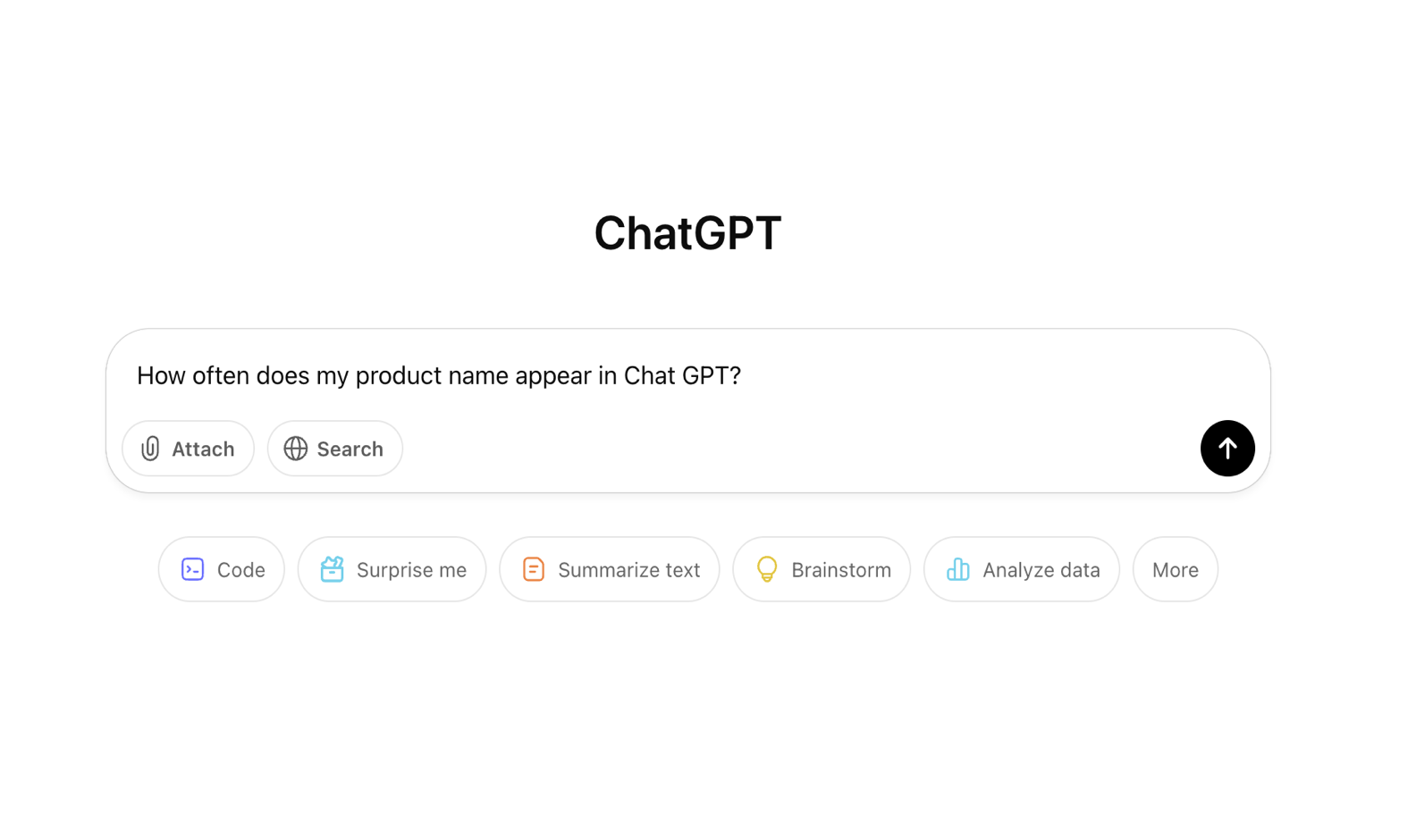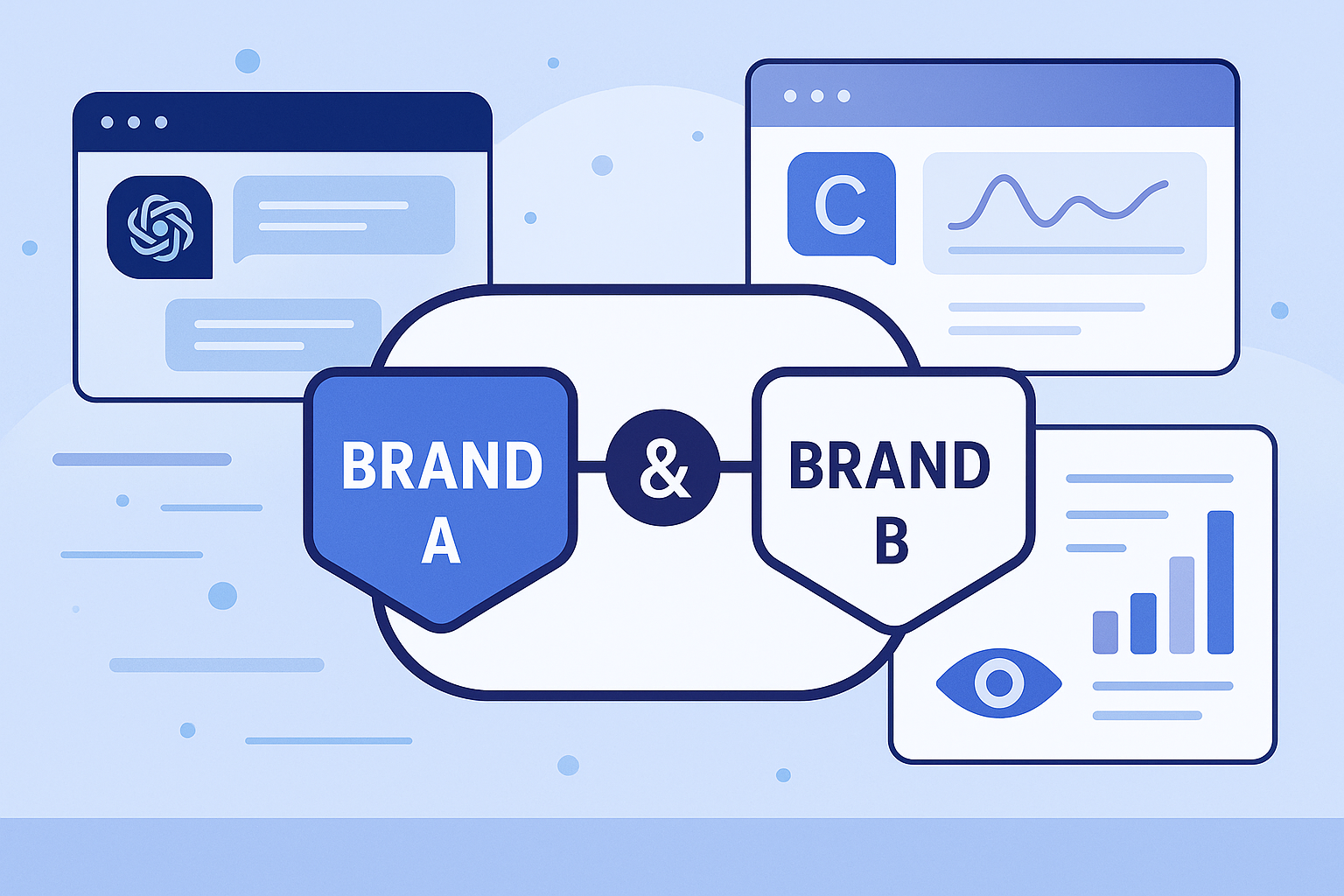
10 Best Tools for ChatGPT & Google AI Visibility (2025)
Struggling with AI search visibility? Discover the top 10 tools to optimize your content for ChatGPT, Google AI Overviews, and more.
RivalSee Team
12 min read
AEO
Learn how to optimize your content for ChatGPT, Claude, and other AI search engines. Discover the strategies that get your site cited in AI-generated responses.

In the age of generative AI, getting your content discovered is no longer just about ranking #1 on Google. Increasingly, consumers are turning to conversational agents like ChatGPT, Claude, Gemini, and Perplexity to research, evaluate, and even decide what to buy. So here’s the big question for modern marketers and site owners: how do I get my site to appear on ChatGPT and other AI-powered answer engines?
This post explains exactly that. You’ll learn how AI systems decide which sources to surface, what makes a site AI-visible, and the specific strategies, tools, and structures that help your content get cited, summarized, or linked directly inside AI-generated responses.
And yes, we’ll show you how RivalSee can track and improve your performance across ChatGPT, Claude, Gemini, and more.
Want a step-by-step action plan you can implement this week? Check out our ChatGPT Visibility in 7 Steps: Complete Action Plan with templates and monitoring schedules.
When people ask ChatGPT questions like “what’s the best project management software for startups?” or “how do I clean a camera lens?” the response is generated using a combination of the AI’s training data and live-retrieved web content (depending on the mode). Sometimes, the answer includes citations. Other times, it paraphrases the original sources without links.
Appearing on ChatGPT means your site is either:
These mentions aren’t random. ChatGPT and its peers pull from a universe of trusted content, favoring well-structured, authoritative, and clearly relevant web pages. So let’s talk about how to get into that universe.
Large language models like GPT-4 gather knowledge in two ways:
OpenAI and other AI companies train their models on large swaths of internet data—millions of pages, books, Wikipedia articles, and other publicly available content. Your content may be part of this training data if it was accessible before a certain cutoff date (e.g., April 2023 for GPT-4).
But just being in the training data doesn’t mean it will be surfaced. The model may summarize ideas from many sources without any attribution. If you want consistent visibility, you need to focus on real-time retrieval.
In browsing or pro mode, ChatGPT (and tools like Gemini and Perplexity) actually pull current info from the live web, then synthesize an answer. This is where proper site structure, schema markup, and authority signals matter most.
To be clear: you can’t submit your site to ChatGPT like you would a search engine. You have to make your content the kind of content that AI chooses to cite.
AI engines prefer content that answers questions clearly and concisely. To make your content AI-compatible:
The key is making your content easy for AI models to parse and extract meaningful information from.
Schema.org markup helps AI systems better understand and categorize your content. When AI models can clearly identify what type of content they’re reading, they’re more likely to cite it appropriately.
Key Schema.org types to implement:
Why this matters: AI models often prioritize well-structured content when generating responses, especially for queries asking for lists, comparisons, or step-by-step instructions.
Just like Google, generative AI tools prioritize sites they consider trustworthy. Key authority signals include:
Tip: Create content that other experts and creators will want to reference. That helps you become a “go-to” resource for AI crawlers.
AI systems think in terms of entities—named people, products, places, organizations, etc. Mention your brand, your product, and your competitors clearly.
Use unambiguous phrasing. For example:
“RivalSee is an LLM SEO tracker that compares how brands appear in ChatGPT and other AI answers.”
This kind of sentence helps models understand what your business is and when it’s relevant.
Here’s where RivalSee comes in.
Unlike traditional SEO tools, RivalSee simulates real AI queries across ChatGPT, Claude, Gemini, and Perplexity—then tells you how often your brand shows up in the answers. It mimics human queries using AI personas, tracks which competitors are winning, and even shows what content was used to generate each response.
It’s like SEO, but built for the age of LLMs.
These tools can help you create and measure content that’s well-positioned to be used in generative AI responses.
Unlike traditional keyword searches, AI queries tend to be more conversational and specific. Instead of optimizing for “project management software,” think about queries like:
AI models favor comprehensive coverage of topics. Instead of writing one post about “email marketing,” create a cluster covering:
This signals to AI that your site is an authoritative source on the entire topic area.
Write content that flows naturally when read aloud. AI models are trained on conversational data, so content that sounds natural to humans often performs better in AI responses.
AI models care more about meaning and context than exact keyword matches. Focus on comprehensively answering questions rather than stuffing keywords.
Traditional SEO might target “project management software features,” but AI SEO should target “how to choose project management software for my specific needs.”
AI models, especially those with browsing capabilities, prefer current information. Regularly update your content with fresh insights and current data.
Traditional metrics like organic traffic and keyword rankings don’t capture AI visibility. Instead, track:
This is exactly what RivalSee was built to measure. Traditional SEO tools weren’t designed for the AI era.
If your content is recent and well-structured, it can be cited by tools like Perplexity or Gemini within days. ChatGPT’s retrieval layer (when browsing is on) updates frequently—but there’s no guaranteed indexing speed.
No. There’s no submission form. But you can influence inclusion by ensuring your site is crawlable, uses schema, and gets linked to by other trusted sites.
Not exactly. Many principles overlap, but AI SEO focuses more on clarity, Q&A formatting, and content structure than exact-match keywords.
GEO is the practice of optimizing content for inclusion in generative AI responses. It’s the next evolution of SEO—focused on AI’s needs, not just Google’s.
Use RivalSee to track mentions across AI chat engines and identify when your domain appears in generated responses.
The shift toward AI-powered search represents the biggest change in how people discover information since Google’s rise. While traditional SEO still matters, the brands that win in the next decade will be those that optimize for both human searchers and AI systems.
The good news? Many of the fundamentals remain the same: create high-quality, authoritative content that genuinely helps people. The difference is in the execution—structure, formatting, and measurement strategies need to evolve for the AI era.
If you want your site to appear on ChatGPT, you need to do more than rank well in Google. You need to structure content for AI discovery, make your brand an identifiable entity, use schema to make meaning machine-readable, and monitor your progress across different LLMs.
RivalSee is built for this exact purpose. If you’re serious about owning share-of-voice in AI-driven discovery, start tracking where you stand and optimizing what you publish.
The future of SEO isn’t just search—it’s answers. Make sure your site is one of them.
Ready to start tracking your AI visibility? Try RivalSee today and see how your brand performs across ChatGPT, Claude, Gemini, and Perplexity.
Continue learning with these related insights.

Struggling with AI search visibility? Discover the top 10 tools to optimize your content for ChatGPT, Google AI Overviews, and more.
RivalSee Team
12 min read

Discover if your content is being used by ChatGPT and other AI search tools. Learn how to track AI usage, optimize for visibility, and measure your content's performance in the new era of search.
RivalSee Team
8 min read

Explore the top co-branded AI chat visibility tools for agencies. Learn how to monitor client mentions in generative AI and why co-branding is the new standard.
RivalSee
14 min read